Source: Kim, M. and Baek, T.H. (2025), "Fostering brand love through branded memes on social media", Journal of Product & Brand Management, Vol. ahead-of-print No. ahead-of-print. https://doi.org/10.1108/JPBM-02-2024-5002
Ever wonder why some branded memes elicit a chuckle and get shared while others fall flat? This episode unpacks fascinating research from the Journal of Product & Brand Management that scientifically examines what makes a good branded meme good. We will break down the key ingredients—from tapping into trends to generating a sense of connection—and show how these digital jokes influence our relationships with brands (both for marketers and consumers). This isn't just about going viral; it's about building genuine brand loyalty. Please note this study focuses specifically on Facebook users.
Core Findings
Trendiness is King (or Queen): Memes that latch onto whatever's currently trending are far more likely to get laughs. Brands have started making use of this by cleverly alluding to a recent viral video or meme format. "Being in the know" is what is going to push the brand into your social media algorithms.
Liberation Connects Strongly, Doesn't Directly Amuse: While memes that suggest liberation or transgression of norms might not cause a sudden surge of laughter, they are especially adept at enhancing the consumer's sense of affiliation with the brand. It’s not so much about mirth as it is about that feeling of congruence with the brand's values and identity.
Hedonism Isn't Always Enough: Merely creating a fun, enjoyable meme isn't enough to drive humor perception or deeper brand connections, according to this study. While general engagement is important, pure enjoyment alone doesn't assure humor or that there will be a stronger brand connection in the branded memes.
Humor Bridges the Gap: Humor—or should we say “perceived humor”—is very important here. When a branded meme moves you to laughter, that’s important: it drastically enhances your connection with the brand and makes you feel a sense of love, belonging, and attachment.
Connection Fuels Love: When you feel a deep personal connection with a brand (as if it reflects who you are), it is much more likely that you’ll develop a deep appreciation for that brand.
Actionable Takeaways
For Marketers:
Ride the Trend Wave: Stay agile and integrate current, relevant trends into your meme strategy. Real-time marketing is key.
Connect Through Values: Focus on memes that reflect your brand's identity and values, fostering a strong sense of connection and resonance with your audience. Remember, liberation is a powerful tool for building this connection.
Don't Rely Solely on Fun for Connection: While enjoyable content is good, ensure your memes have a layer of relevance, cleverness, or connection to current happenings to drive brand connection and humor. Remember, pure entertainment isn't always enough.
Humor is Your Ally: Prioritize creating genuinely funny content. This is a direct route to building stronger relationships with consumers.
Know Your Audience's Identity: Understand what your audience cares about and how your brand aligns with their self-perception. This is crucial for memes that foster true connection.
For Consumers:
Notice the Trends: Be aware of how brands are using current trends in their marketing. Is it clever, or are they trying too hard?
Consider the Connection: Think about why you share certain branded memes. Does it make you laugh? Does it reflect something about your own identity or values?
Humor is Powerful: Recognize the influence of humor in shaping your feelings towards a brand. If a brand consistently makes you laugh, it's likely building a positive association.
Real-World Examples
Trendiness Done Right: Consider how brands quickly jumped on the "Distracted Boyfriend" meme format, adapting it to their products or services in humorous and relevant ways. This capitalized on a pre-existing cultural moment.
Liberation & Connection: A brand using a meme to subtly challenge a societal norm relevant to their audience (e.g., a beauty brand promoting body positivity) can foster a strong connection, even if the meme isn't a laugh riot.
Hedonism Falling Short: Think of a generic, feel-good meme from a brand that lacks a clear connection to their product or values. It might be pleasant, but it's unlikely to drive deeper engagement or brand love for many.
Humor as a Bridge: Brands known for their witty social media presence often see higher engagement and brand loyalty. Think of Wendy's sassy Twitter account – their humor builds a distinct brand personality.
Self-Brand Connection: A gaming brand using memes that resonate with gaming culture and inside jokes creates a strong sense of "they get me" among their target audience.
This research provides some interesting insights into the power of branded memes. Going viral is only one aspect of the strategy; it's also about leveraging humor and cultural relevance to make real connections with your customer base. And, in so doing, to drive something like "brand love," which is where we all want our customers to live, isn't it? Although this research was mostly carried out on Facebook, marketers everywhere should pay attention. The psychological mechanisms discussed here are essential when marketers start developing their next meme campaigns. And for the rest of us, these pages offer a glimpse into why and how we share and connect with brands in the digital world.


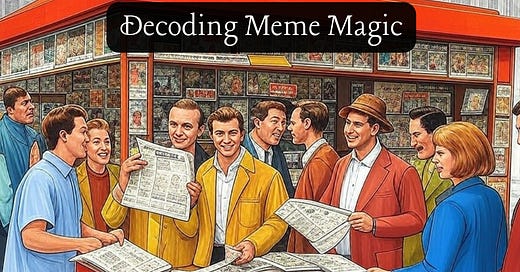





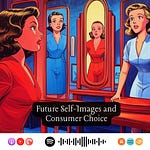
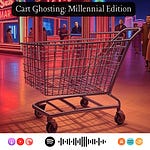
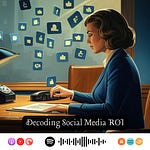
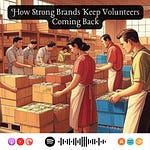

Share this post